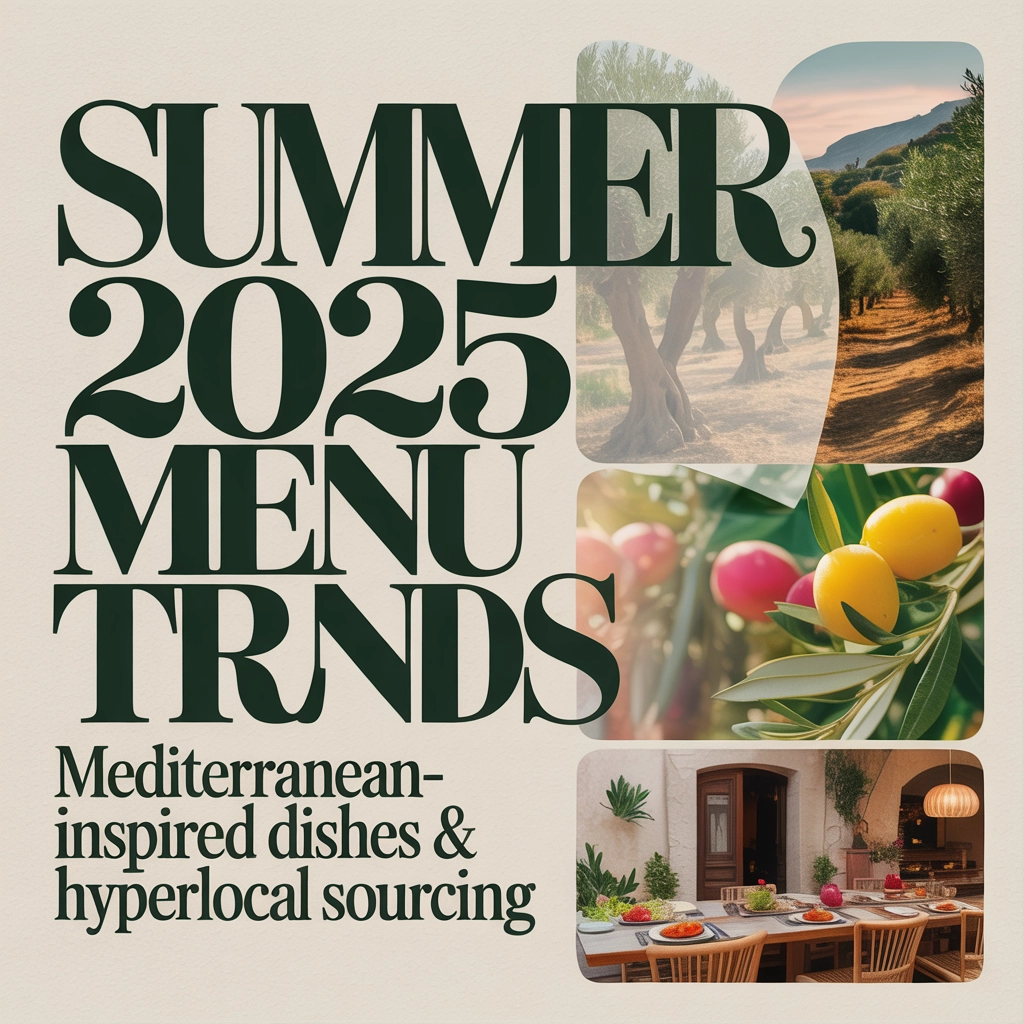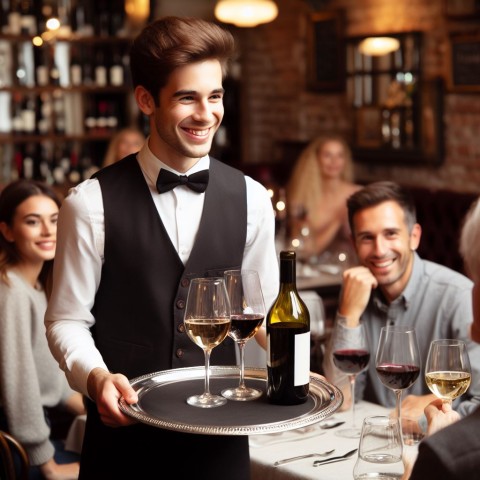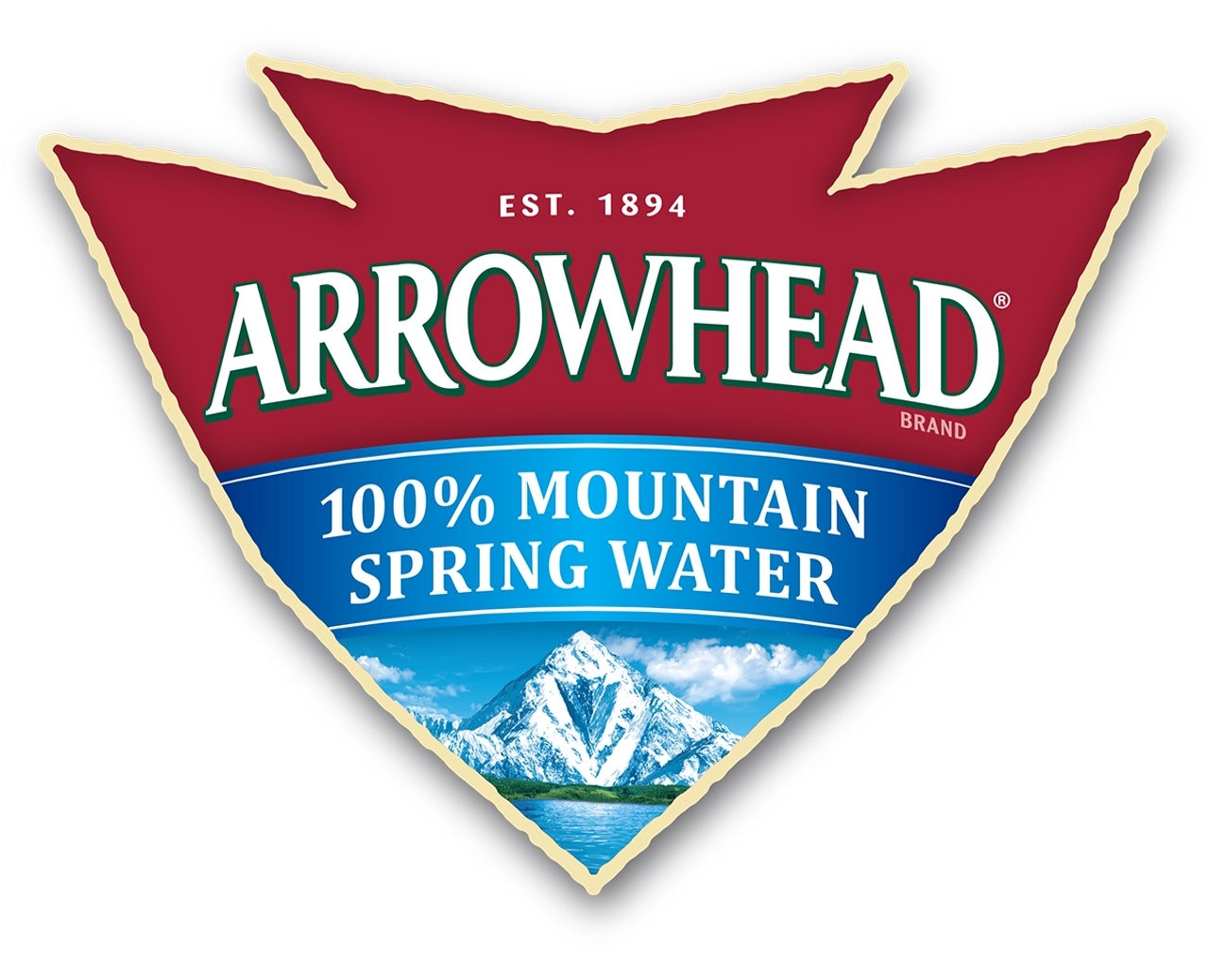The New Summer Playbook: Mediterranean Meets Hyperlocal
As temperatures rise across the country, the culinary landscape is heating up with distinctive trends that will define Summer 2025 menus. This season, two powerful movements are converging to reshape how restaurants approach their summer offerings: Mediterranean-inspired cuisine and hyperlocal sourcing practices. For food and beverage professionals looking to captivate diners and maximize seasonal opportunities, understanding these trends isn't just beneficial—it's essential.
Our industry has witnessed the pendulum swing from global fusion extravagance to stripped-down minimalism over the years. Now, we're entering an era where provenance and place matter more than ever, while the timeless appeal of Mediterranean flavors provides the perfect canvas for summer expression.
The Mediterranean Renaissance: Why Now?
The Mediterranean diet has long been celebrated for its health benefits and vibrant flavors, but 2025 marks a distinctive evolution in how chefs are interpreting these regional influences. Rather than generic "Mediterranean" offerings, we're seeing micro-regional specialties taking center stage.
"What's driving this trend is a deeper appreciation for the Mediterranean's diverse culinary landscapes," explains Chef Maria Katsaros, culinary director at Coastal Kitchen Group. "We're moving beyond hummus and greek salad to explore lesser-known traditions from specific regions like Calabria, Crete, or coastal Morocco."
Key elements defining this trend include:
Coastal-Inspired Seafood Preparations
Restaurants are showcasing sustainable seafood with minimal interventions—whole grilled fish with olive oil, lemon, and herbs; raw preparations accented with citrus and sea salt; and seafood conservas (preserved in olive oil) as elegant small plates. These dishes emphasize freshness while requiring minimal cooking time—perfect for hot summer kitchens.
Vegetable-Forward Meze Culture
Small, shareable vegetable dishes are becoming menu mainstays rather than mere appetizers. Summer 2025 sees chefs elevating humble produce through fermentation, charring, and creative use of regional spice blends like za'atar, dukkah, and berbere. These plates provide excellent margin opportunities while meeting growing demand for plant-centric dining experiences.

Grain and Pulse Innovation
Ancient grains like farro, freekeh, and bulgur are appearing in contemporary applications—from cool summer salads to innovative risotto-style preparations. Similarly, chickpeas, lentils, and fava beans are featured prominently, offering protein-rich options that satisfy plant-based diners without relying on processed meat alternatives.
Bright, Acidic Flavor Profiles
The Mediterranean's signature brightness—delivered through ingredients like preserved lemon, sumac, pomegranate molasses, and high-quality vinegars—provides the perfect counterpoint to summer heat. These bold flavor agents allow chefs to create memorable dishes without relying heavily on fats or complicated techniques.
Hyperlocal Sourcing: Beyond the Buzzword
While "farm-to-table" has become nearly ubiquitous, hyperlocal sourcing represents its next evolution—and one particularly suited to summer menu planning. Unlike broader local sourcing initiatives, hyperlocal emphasizes ingredients sourced within extremely tight radiuses—often from on-site gardens, urban farming projects, or producers within the same neighborhood.
"The hyperlocal movement is partly practical, partly philosophical," notes Jenna Rodriguez, sustainability director at The Harvest Collective. "When restaurants grow or source ingredients from their immediate surroundings, they gain control over freshness while reducing transportation emissions. But they're also telling a unique story about place that can't be replicated elsewhere."
This approach is transforming summer menus through:
On-Site Growing Programs
From rooftop gardens to courtyard herb patches, restaurants are increasingly allocating space to grow signature ingredients. Summer 2025 sees establishments investing in specialized growing operations for high-impact items like heirloom tomatoes, microgreens, edible flowers, and rare herb varieties that distinguish their dishes from competitors.
Hyperlocal Beverage Programs
The trend extends beyond food to include house-made cordials, infusions, and garnishes derived from on-site resources. Bartenders are creating signature syrups from herbs grown just steps from the bar, while some establishments are partnering with urban beekeepers for hyperlocal honey or foragers for unique botanical ingredients.
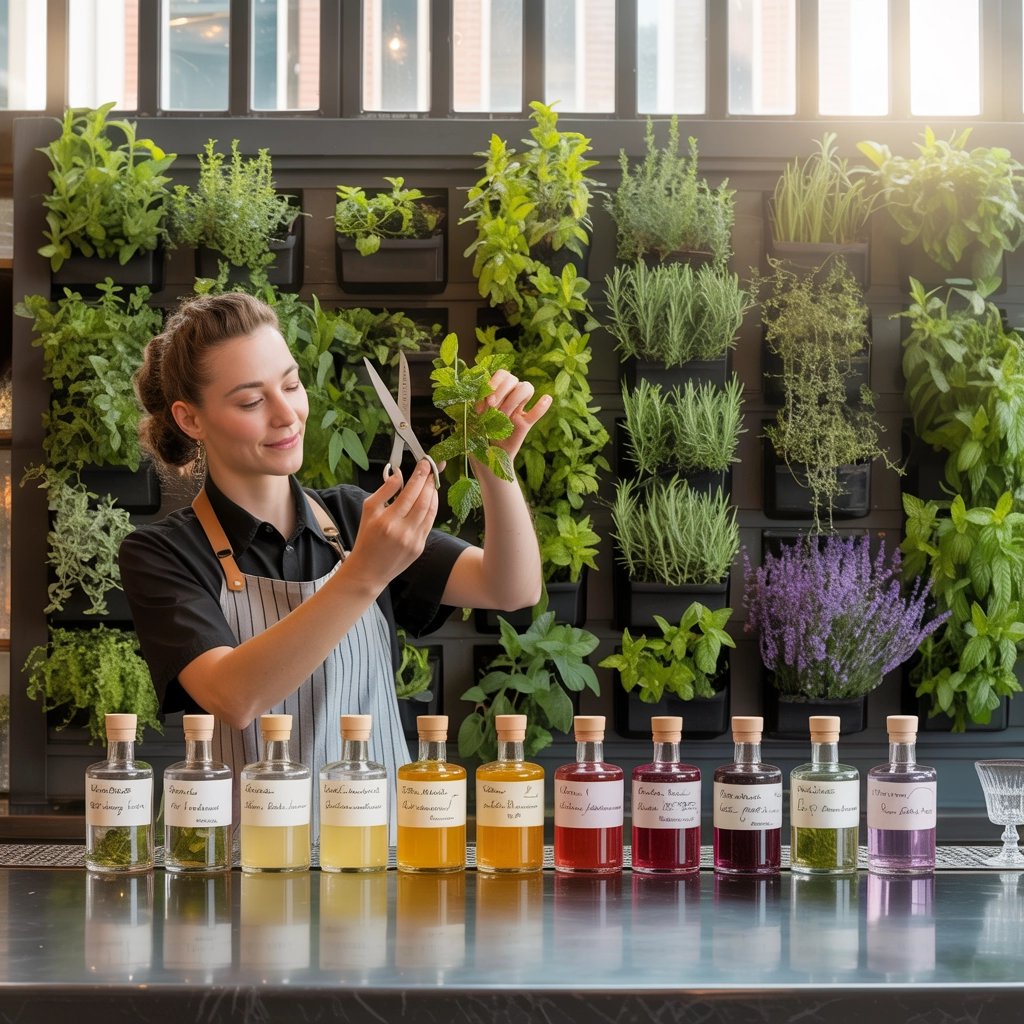
Community Microfarm Partnerships
Restaurants without growing capacity are forming direct relationships with neighborhood-based growing operations—sometimes even investing in dedicated plots at community gardens or supporting urban farming initiatives. These partnerships often yield exclusive access to varieties not available through conventional distribution channels.
Transparent Provenance Stories
Menus now regularly feature specific farm names, distances from the restaurant, and stories behind signature ingredients. This transparency resonates with diners who increasingly make choices based on sustainability and community impact, creating marketing opportunities that extend beyond the plate.
Where Mediterranean and Hyperlocal Converge
The magic happens when these two trends intersect, creating distinctive summer offerings that couldn't exist at any other time or place. Here's how leading restaurants are combining these approaches:
Adapting Mediterranean Techniques to Local Ingredients
Progressive chefs are applying Mediterranean preservation techniques—salt-curing, oil-preserving, fermentation—to hyperlocal ingredients that wouldn't traditionally appear in Mediterranean cuisine. Think house-made "midwest boquerones" using locally caught freshwater fish, or preserved garlic scapes treated like traditional preserved lemons.
Creating Bioregional Mediterranean Interpretations
Rather than replicating exact Mediterranean dishes, innovative kitchens are creating bioregional interpretations that honor local ingredients through Mediterranean techniques. This might mean a Pacific Northwest "mezze" featuring local mushrooms, foraged greens, and regional seafood prepared with Mediterranean sensibilities.
Leveraging Shoulder-Season Techniques
Mediterranean cuisines excel at transitioning between seasons, and this expertise proves valuable when working with hyperlocal ingredients. Early summer unripe fruits might become house-made "green" preserves similar to green walnut preserves (gliko karydaki), while late-spring vegetables find new life through Mediterranean pickling traditions.
"The Mediterranean approach gives us a framework for honoring ingredients at every stage of their development," says Chef Carlos Moreno of Terroir Restaurant Group. "When you're working hyperlocally, you need strategies for using everything your suppliers bring—the Mediterranean tradition offers centuries of wisdom about making the most of what's available right now."
Supporting Trends Shaping Summer 2025
While Mediterranean influence and hyperlocal sourcing lead the way, several complementary trends are reinforcing these movements:
Functional Ingredients and Wellness Integration
Health-conscious dining continues gaining momentum, with functional beverages infused with electrolytes, adaptogens, and botanicals becoming summer menu staples. Mediterranean ingredients naturally align with this trend—olive oil, omega-rich seafood, and antioxidant-packed produce all deliver health benefits that resonate with today's diners.
Elevated Value Propositions
Economic pressures continue influencing dining decisions, driving innovation in value-focused offerings. Mediterranean cuisine's traditional emphasis on stretching premium ingredients (using small amounts of flavorful protein as accents rather than centers) aligns perfectly with contemporary value engineering, allowing restaurants to maintain margins while delivering perceived abundance.
Cross-Cultural Flavor Mashups
While Mediterranean influences dominate, they're frequently appearing alongside other global cuisines. As noted in our recent report on 2025 flavor trends, unexpected combinations like Sicilian-Korean or Moroccan-Vietnamese are creating distinctive signatures that help restaurants stand out in crowded markets.
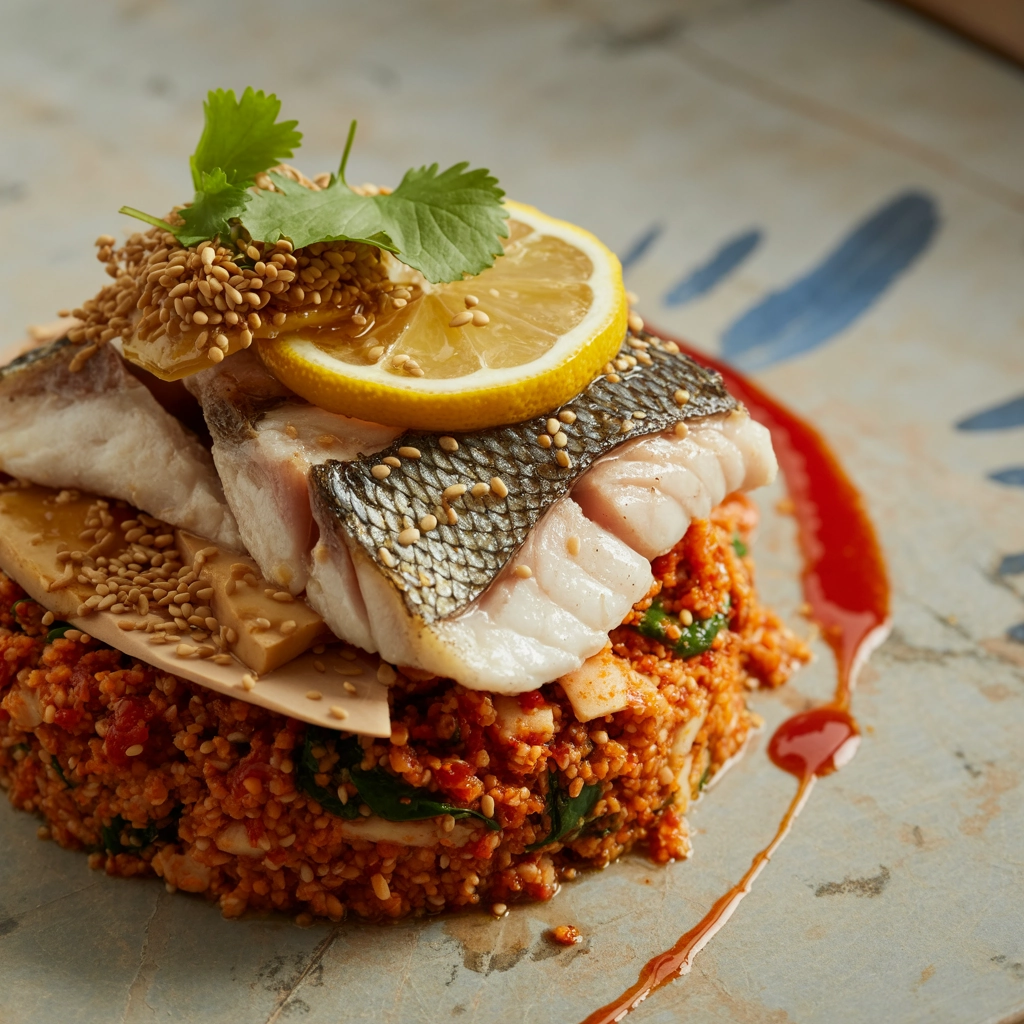
Implementation Guide: Making These Trends Work For You
For operators looking to capitalize on these trends, consider these actionable strategies:
1. Start With a Hyperlocal Audit
Before overhauling menus, inventory potential hyperlocal sources—from available garden space to neighborhood producers. Even urban establishments often discover untapped local resources once they begin actively searching.
2. Identify Mediterranean Principles, Not Just Recipes
Rather than adding generic Mediterranean items, focus on incorporating Mediterranean principles: emphasizing vegetables and grains, using meat as a flavor accent rather than center-plate protein, and leveraging acid-forward flavor profiles that shine in summer.
3. Create Signature Hyperlocal Ingredients
Develop at least one signature ingredient that's uniquely yours—whether house-made preserved lemons, a custom herb blend grown on your rooftop, or a relationship with a local producer for an exclusive variety. This creates marketing opportunities while differentiating your offerings.
4. Train Staff as Storytellers
The narrative behind hyperlocal sourcing creates value that extends beyond the plate. Invest in comprehensive staff training about sourcing stories, ensuring servers can communicate the care behind your ingredients authentically.
5. Consider Menu Structure Evolution
Mediterranean dining traditions often feature numerous small plates rather than rigid course progressions. Consider how adjusting menu structure might better showcase hyperlocal ingredients while creating more flexible dining experiences suited to summer socializing.
6. Develop Preservation Strategies
Both hyperlocal sourcing and Mediterranean traditions emphasize preservation. Invest in techniques that extend seasonal bounty—from fermenting and pickling to oil-preserving and dehydrating—creating signature items that can carry your summer story into future seasons.
Looking Ahead: Beyond Summer 2025
While focusing on immediate implementation, forward-thinking operators should note emerging signals that will influence fall menus. Our trend forecasting suggests Mediterranean influences will evolve toward heartier preparations featuring preserved summer bounty, while hyperlocal programs will shift toward root vegetables, preserved items, and creative uses of "second harvest" ingredients like green tomatoes and late-season herbs.
The restaurants that most successfully navigate this transition period will be those that develop comprehensive preservation programs during peak summer abundance, creating signature ingredients that carry their summer story into cooler months.
The Bottom Line
Summer 2025's convergence of Mediterranean influences and hyperlocal sourcing offers restaurants powerful opportunities to create distinctive offerings, control costs, and deliver memorable dining experiences. By thoughtfully implementing these trends, operators can differentiate themselves while building stronger connections to their immediate communities and food systems.
For more insights on emerging culinary trends, explore our recent coverage of viral flavors shaping 2025 menus and innovative upcycling practices transforming restaurant operations.
How is your operation implementing Mediterranean influences or hyperlocal sourcing? Share your experiences in the comments below or tag us in your summer menu innovations on social media.
Written by Michael Politz, Author of Guide to Restaurant Success: The Proven Process for Starting Any Restaurant Business From Scratch to Success (ISBN: 978-1-119-66896-1), Founder of Food & Beverage Magazine, the leading online magazine and resource in the industry. Designer of the Bluetooth logo and recognized in Entrepreneur Magazine's "Top 40 Under 40" for founding American Wholesale Floral. Politz is also the founder of the Proof Awards and the CPG Awards and a partner in numerous consumer brands across the food and beverage sector.



